Visibility

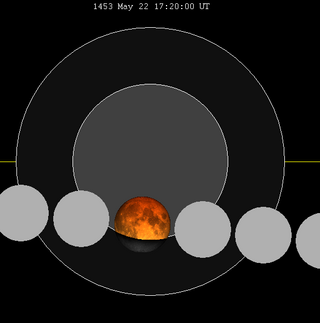
The partial eclipse was visible from Africa, Asia, Europe and Oceania.
| Partial eclipse | |||||||||||||
| Date | 22 May 1453 | ||||||||||||
|---|---|---|---|---|---|---|---|---|---|---|---|---|---|
| Gamma | −0.6067 | ||||||||||||
| Magnitude | 0.7446 | ||||||||||||
| Saros cycle | 102 (56 of 84) | ||||||||||||
| Partiality | 178 minutes, 43 seconds | ||||||||||||
| Penumbral | 315 minutes, 27 seconds | ||||||||||||
| |||||||||||||
A partial lunar eclipse occurred on 22 May 1453.
It was seen during the Fall of Constantinople (the capture of the capital of the Byzantine Empire), during the siege that lasted from Thursday, 5 April 1453 until Tuesday, 29 May 1453), after which the city fell to the Ottomans. The lunar eclipse was considered to be fulfilling a prophecy for the city's demise, which says a blood moon took place during the eclipse.


The partial eclipse was visible from Africa, Asia, Europe and Oceania.

Year 1453 (MCDLIII) was a common year starting on Monday of the Julian calendar, the 1453rd year of the Common Era (CE) and Anno Domini (AD) designations, the 453rd year of the 2nd millennium, the 53rd year of the 15th century, and the 4th year of the 1450s decade.
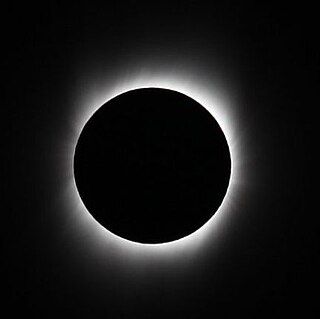
A total solar eclipse occurred at the Moon's descending node of the orbit on July 22, 2009, with a magnitude of 1.07991. It was the longest total solar eclipse during the 21st century; the longest total solar eclipse during the 3rd millennium will be on 16 July 2186. It lasted a maximum of 6 minutes and 38.86 seconds off the coast of Southeast Asia, causing tourist interest in eastern China, Pakistan, Japan, India, Nepal and Bangladesh. Its greatest magnitude was 1.07991, occurring only 6 hours, 18 minutes after perigee, with greatest eclipse totality lasting 6 minutes, 38.86 seconds during the Total Solar Eclipse of July 22, 2009.

A solar eclipse occurs when the Moon passes between Earth and the Sun, thereby obscuring the view of the Sun from a small part of the Earth, totally or partially. Such an alignment occurs approximately every six months, during the eclipse season in its new moon phase, when the Moon's orbital plane is closest to the plane of the Earth's orbit. In a total eclipse, the disk of the Sun is fully obscured by the Moon. In partial and annular eclipses, only part of the Sun is obscured. Unlike a lunar eclipse, which may be viewed from anywhere on the night side of Earth, a solar eclipse can only be viewed from a relatively small area of the world. As such, although total solar eclipses occur somewhere on Earth every 18 months on average, they recur at any given place only once every 360 to 410 years.
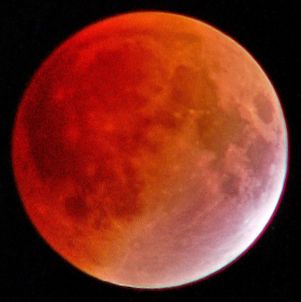
A total lunar eclipse occurred on 28 August 2007, lasting just over 90 minutes. The Moon entered the Earth's penumbra at 7:53:40 UTC. The first partial phase began in earnest at 8:51:16 UTC when the Moon entered the Earth's umbra. It exited the penumbra at 13:20:57 UTC.

A total lunar eclipse occurred on February 20 and February 21, 2008. It was visible in the eastern evening sky on February 20 for all of North and South America, and on February 21 in the predawn western sky from most of Africa and Europe. Greatest Eclipse occurring on Thursday, February 21, 2008, at 03:26:03 UTC, totality lasting 49 minutes and 45.6 seconds.

A total lunar eclipse occurred from 5:27 to 11:06 UTC on 21 December 2010, coinciding with the date of the Winter solstice in the Northern Hemisphere and Summer solstice in the Southern Hemisphere. It was visible in its entirety as a total lunar eclipse in North and South America, Iceland, Ireland, Britain and northern Scandinavia.

A total lunar eclipse took place on October 27–28, 2004, the second of two total lunar eclipses in 2004, the first being on May 4, 2004. It was the first lunar eclipse to take place during a World Series game, which when seen from Busch Memorial Stadium in St, Louis, Missouri, provided a surreal sight on the night the Boston Red Sox won their first World Series in 86 years to end the Curse of the Bambino. Occurring 5.6 days before apogee, the Moon's apparent diameter was smaller. The moon was 10.1 days after perigee and 5.6 days before apogee.

A partial lunar eclipse took place on Monday, October 17, 2005, the second of two lunar eclipses in 2005. A tiny bite out of the Moon may have been visible at maximum, though just 6.25% of the Moon was shadowed in a partial eclipse which lasted for nearly 56 minutes and was visible over east Asia, Australasia, and most of the North America. A shading across the moon from the Earth's penumbral shadow should have been visible at maximum eclipse.

Saros cycle series 121 for lunar eclipses occurs at the moon's descending node. It began in 1029 and will end in 2526. It contains 84 member lunar eclipses, each separated by 18 years 11 and 1/3 days, and will last 1496.5 years.

A total lunar eclipse took place on 4 April 2015. It is the former of two total lunar eclipses in 2015, and the third in a tetrad. Other eclipses in the tetrad are those of 15 April 2014, 8 October 2014, and 28 September 2015.

A partial lunar eclipse occurred on 19 November 2021. The eclipse occurred towards a micromoon. This was the longest partial lunar eclipse since 18 February 1440, and the longest until 8 February, 2669; however, many eclipses, including the November 2022 lunar eclipse, have a longer period of umbral contact at next to 3 hours 40 minutes. It was often referred to as a "Beaver Blood Moon" although not technically fulfilling the criteria for a true blood moon (totality).

A partial lunar eclipse took place on Saturday, May 3, 1958. This was the first partial lunar eclipse of Saros cycle 140. While technically a partial eclipse, the Moon barely clipped the Earth's umbral shadow, which may have been very difficult to observe in practice; though a shading across the moon from the Earth's penumbral shadow should have been visible at maximum eclipse. The partial eclipse lasted for 21 minutes exactly. 0.919% of the Moon was in umbral shadow on Saturday, 3 May 1958.
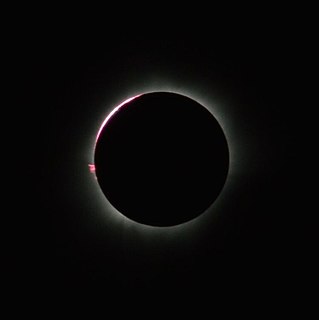
A total solar eclipse took place at the Moon's descending node of the orbit on March 8–9, 2016. If viewed from east of the International Date Line, the eclipse took place on March 8 (Tuesday) and elsewhere on March 9 (Wednesday). A total solar eclipse occurs when the Moon's apparent diameter is larger than the Sun's and the apparent path of the Sun and Moon intersect, blocking all direct sunlight and turning daylight into darkness; the sun appears to be black with a halo around it. Totality occurs in a narrow path across Earth's surface, with the partial solar eclipse visible over a surrounding region thousands of kilometres wide. The eclipse of March 8–9, 2016 had a magnitude of 1.0450 visible across an area of Pacific Ocean, which started in the Indian Ocean, and ended in the northern Pacific Ocean.
An annular solar eclipse occurred at the Moon's ascending node of the orbit on January 15, 2010, with a magnitude of 0.91903. A solar eclipse occurs when the Moon passes between Earth and the Sun, thereby totally or partly obscuring the image of the Sun for a viewer on Earth. An annular solar eclipse occurs when the Moon's apparent diameter is smaller than the Sun's, blocking most of the Sun's light and causing the Sun to look like an annulus (ring). An annular eclipse appears as a partial eclipse over a region of the Earth thousands of kilometres wide. It was the longest annular solar eclipse of the millennium, and the longest until December 23, 3043, with the length of maximum eclipse of 11 minutes, 7.8 seconds, and the longest duration of 11 minutes, 10.7 seconds. This is about 4 minutes longer than total solar eclipses could ever get.

A partial solar eclipse occurred on July 31, 2000. A solar eclipse occurs when the Moon passes between Earth and the Sun, thereby totally or partly obscuring the image of the Sun for a viewer on Earth. A partial solar eclipse occurs in the polar regions of the Earth when the center of the Moon's shadow misses the Earth. It was visible from northern Russia, northeastern Scandinavia, northern Greenland, western Canada, and the northwestern United States.
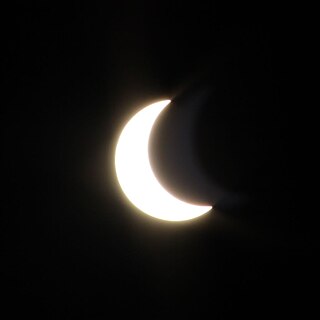
An annular solar eclipse took place on February 26, 2017. A solar eclipse occurs when the Moon passes between Earth and the Sun, thereby totally or partly obscuring the image of the Sun for a viewer on Earth. An annular solar eclipse occurs when the Moon's apparent diameter is smaller than the Sun's, blocking most of the Sun's light and causing the Sun to look like an annulus (ring). An annular eclipse appears as a partial eclipse over a region of the Earth thousands of kilometres wide. Occurring only 4.7 days before perigee, the Moon's apparent diameter was larger. The moon's apparent diameter was just over 0.7% smaller than the Sun's.

An annular solar eclipse occurred on Thursday, June 10, 2021, when the Moon passed between Earth and the Sun, thereby partly obscuring the image of the Sun for a viewer on Earth. During the eclipse, the Moon's apparent diameter was smaller than the Sun's, so it caused the Sun to look like an annulus. The annular eclipse was visible from parts of northeastern Canada, Greenland, the Arctic Ocean, and the Russian Far East, whilst the eclipse appeared partial from a region thousands of kilometres wide, which included northeastern North America, most of Europe, and northern Asia.
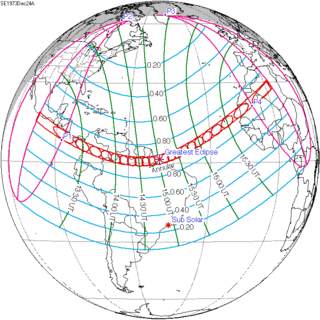
An annular solar eclipse occurred on December 24, 1973. A solar eclipse occurs when the Moon passes between Earth and the Sun, thereby totally or partly obscuring the image of the Sun for a viewer on Earth. An annular solar eclipse occurs when the Moon's apparent diameter is smaller than the Sun's, blocking most of the Sun's light and causing the Sun to look like an annulus (ring). An annular eclipse appears as a partial eclipse over a region of the Earth thousands of kilometres wide. Annularity was visible from southern Mexico, southwestern Nicaragua, Costa Rica including the capital city San José, Panama, Colombia including the capital city Bogotá, southern Venezuela, Brazil, southern Guyana, southern Dutch Guiana, southern French Guiana, Portuguese Cape Verde including the capital city Praia, Mauritania including the capital city Nouakchott, Spanish Sahara, Mali, and Algeria.
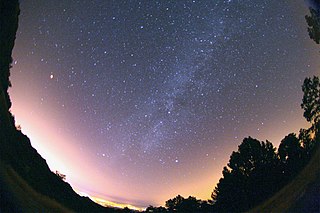
Historically significant lunar eclipses are eclipses of the Moon that are mentioned in historical accounts in connection with a significant event. Lunar eclipses are somewhat rare events, although not as rare as solar eclipses, because unlike solar eclipses they can be viewed from anywhere on the dark side of the Earth. Throughout history lunar eclipses have been held to be responsible for lost battles, and have helped make possible extraordinary escapes.
This article gives statistics for lunar eclipses grouped by century. Detailed information about tetrads, timing, and other facts can be found at the linked references.